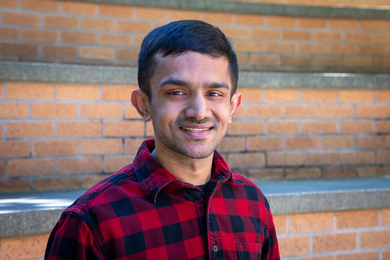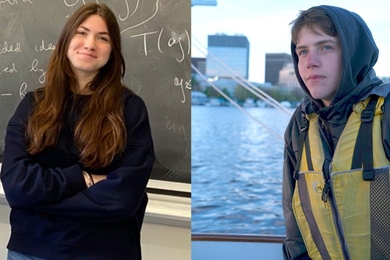In 1924, Albert Einstein predicted that at ultracold temperatures, a phase transition would occur in an ideal gas that would send individual atoms into a single quantum mechanical state. Seventy-one years later, the predicted transition was observed in a gas, leading to the creation of a new form of matter called an atomic Bose-Einstein condensate (BEC). BEC occurs at temperatures below one millionth of a degree Kelvin at about a millionth of atmospheric density.
These ultracold atoms have launched opportunities for new science and technology that will be explored by a new research venture, the MIT-Harvard Center for Ultracold Atoms (CUA), inaugurated on November 7. As part of inauguration ceremonies on November 7, William D. Phillips (MIT PhD 1976) of the National Institute of Standards and Technology, a 1997 Nobel laureate, spoke on "Ultracold Atoms -- The Lure (and Lore) of Physics Near Absolute Zero."
Dr. Phillips, who was involved in early attempts at MIT to make BEC in atomic hydrogen, recalled a primitive experiment done just after he received his PhD. The experiment used a Styrofoam cup filled with liquid nitrogen to cool a tube of hydrogen.
Later, Dr. Phillips helped develop techniques for using laser light to cool and manipulate atoms. These laser-cooling techniques were seminal to the creation of BEC, and it was for this work that he was awarded the Nobel Prize in 1997.
Named for Einstein and the Indian physicist Satyendra Nath Bose, BEC is achieved by chilling a gas of atoms to such a low temperature that the atomic matter waves overlap and the atoms lose their individual identities. They become one big entity, displaying uniform behavior, as opposed to the atoms in a common gas that flit around independently. Almost all of the atoms in a BEC are in a single quantum state, providing a rare opportunity to view quantum mechanics at work on a macroscopic scale.
Lasers were predicted to cool atoms to only a few hundred microKelvin (millionths of a degree), but Dr. Phillips discovered they could be a hundred times colder. Explaining this discovery led to a much deeper understanding of the cooling process and opened the way to a variety of new cooling strategies.
"But with all the laser cooling and trapping success, BEC was still five to six orders of magnitude away. None of the [current] techniques to achieve BEC was even dreamt of at the start," he said.
Finally, when it seemed that the atoms simply couldn't get any colder or denser because the lasers themselves were keeping the atoms too warm, a new pathway became available based on techniques for evaporative cooling developed in the group of Thomas J. Greytak and Daniel Kleppner, professors of physics at MIT, in their work on BEC in atomic hydrogen.
Similar to the way a cup of coffee cools, the temperature of the atomic gas falls as the energetic atoms are allowed to escape. Evaporative cooling was experimentally simplified by the use of radio-frequency fields to allow the atoms to escape, a technique proposed by David E. Pritchard, professor of physics at MIT and a pioneer in atom optics and atom interferometry.
By 1992, CUA researcher Wolfgang Ketterle, professor of physics, had extended these methods and developed novel cooling techniques that were key to the observation of BEC three years later, first by a group at the University of Colorado at Boulder, then a few months later by Professor Ketterle's group at MIT.
A few years ago, Professor Ketterle and his research team managed to eject a beam of atoms from the condensate, creating an atom laser. The atom laser might replace conventional atomic beams where ultimate precision is required, such as in atomic gyroscopes, and provide ultrabright sources for experiments in atom optics.
Research at the CUA includes the development of atom lasers, atom waveguides and other devices for atom optics, and high-resolution atom deposition on surfaces for the fabrication of novel materials and nanostructures.
"The Center for Ultracold Atoms is poised to take this remarkable form of cold, coherent matter to the next level," Dr. Phillips said.
A version of this article appeared in MIT Tech Talk on November 15, 2000.






